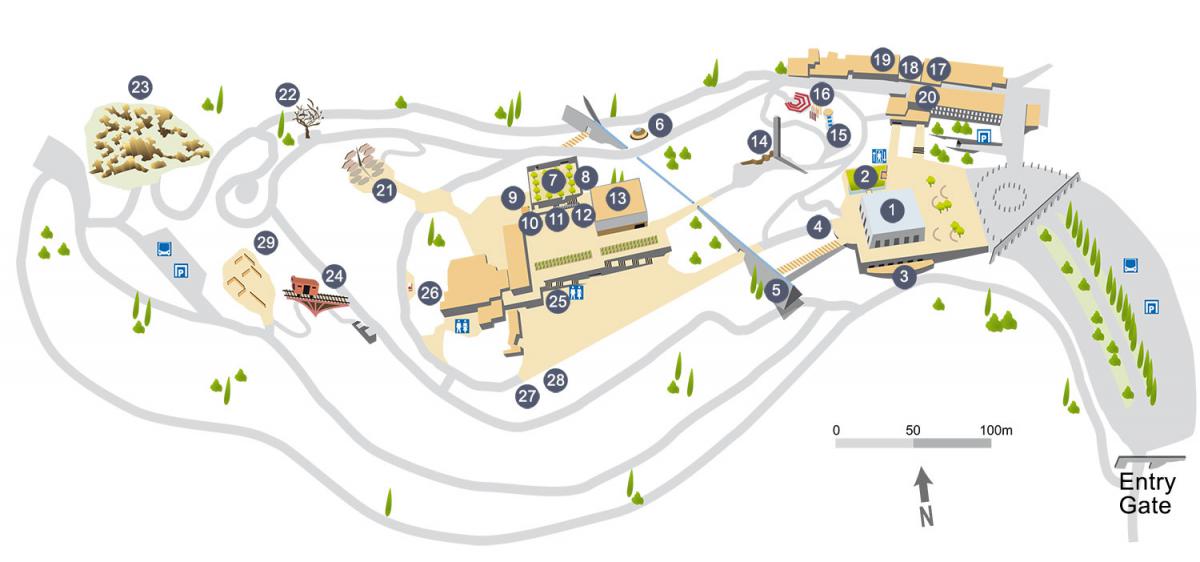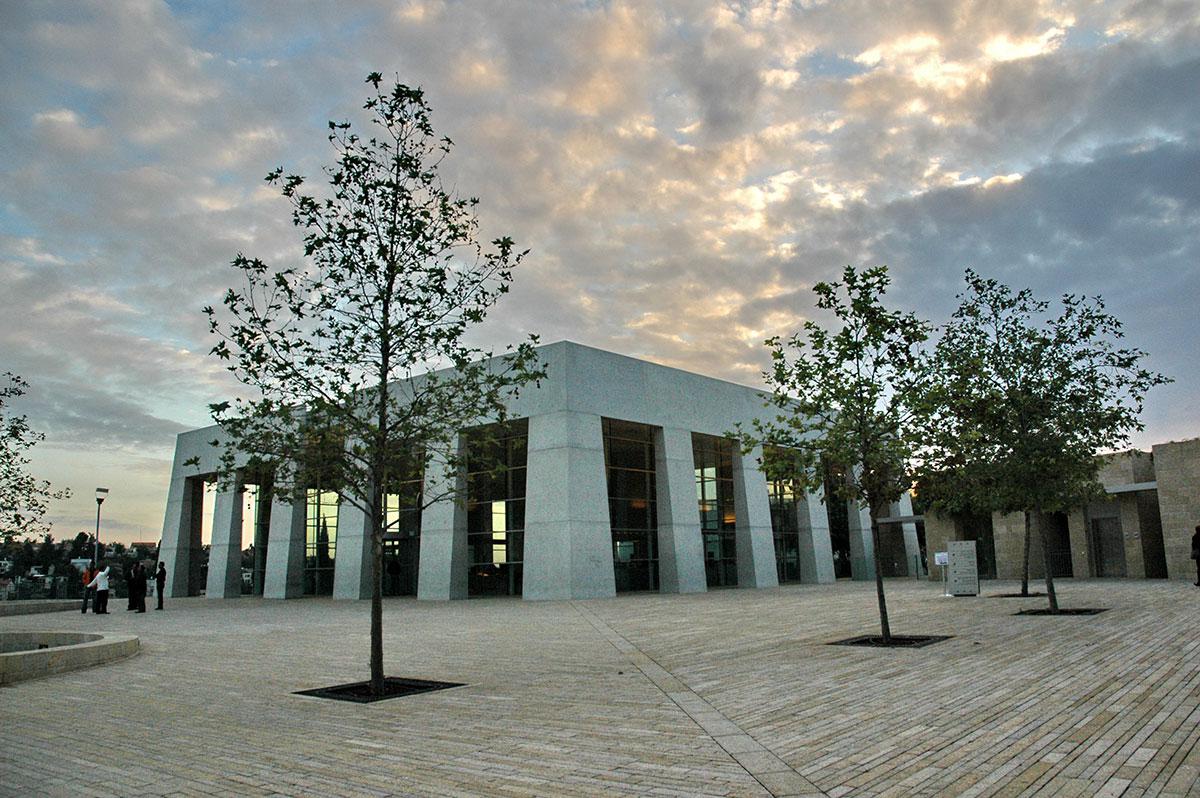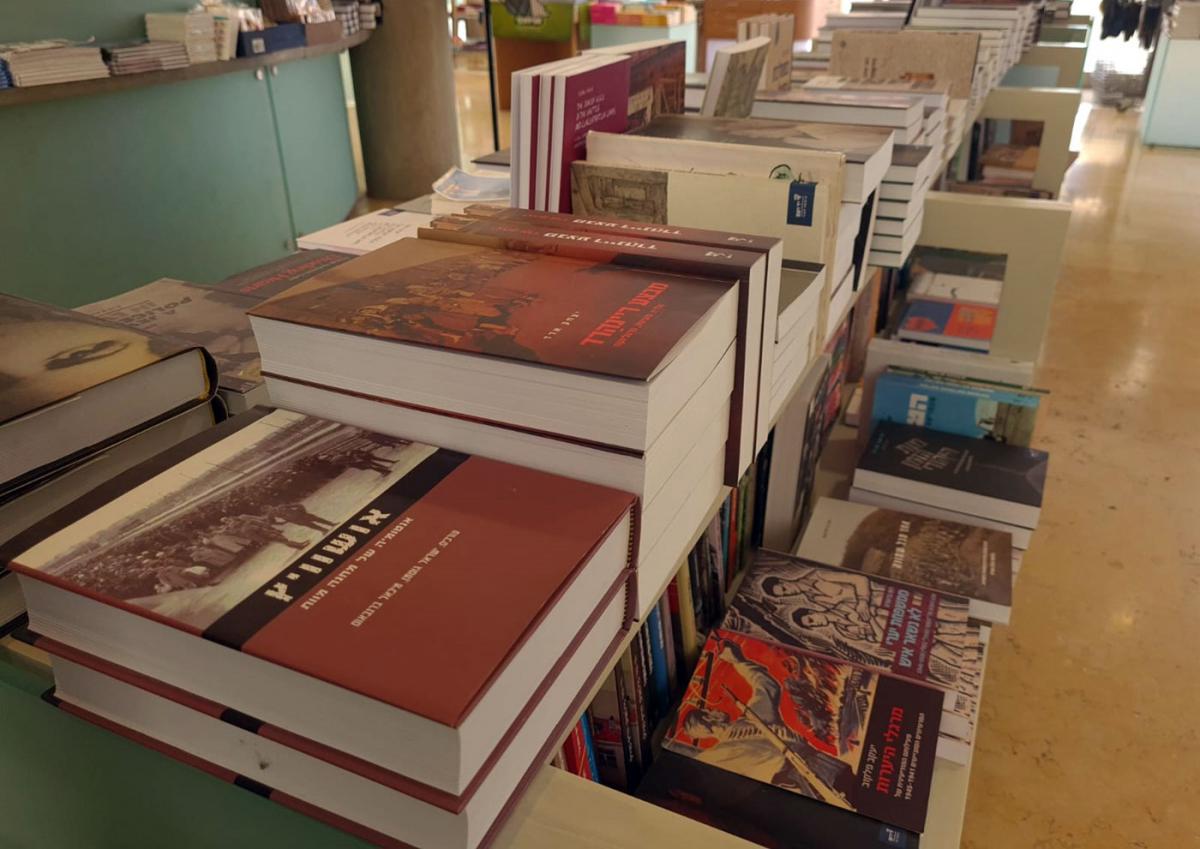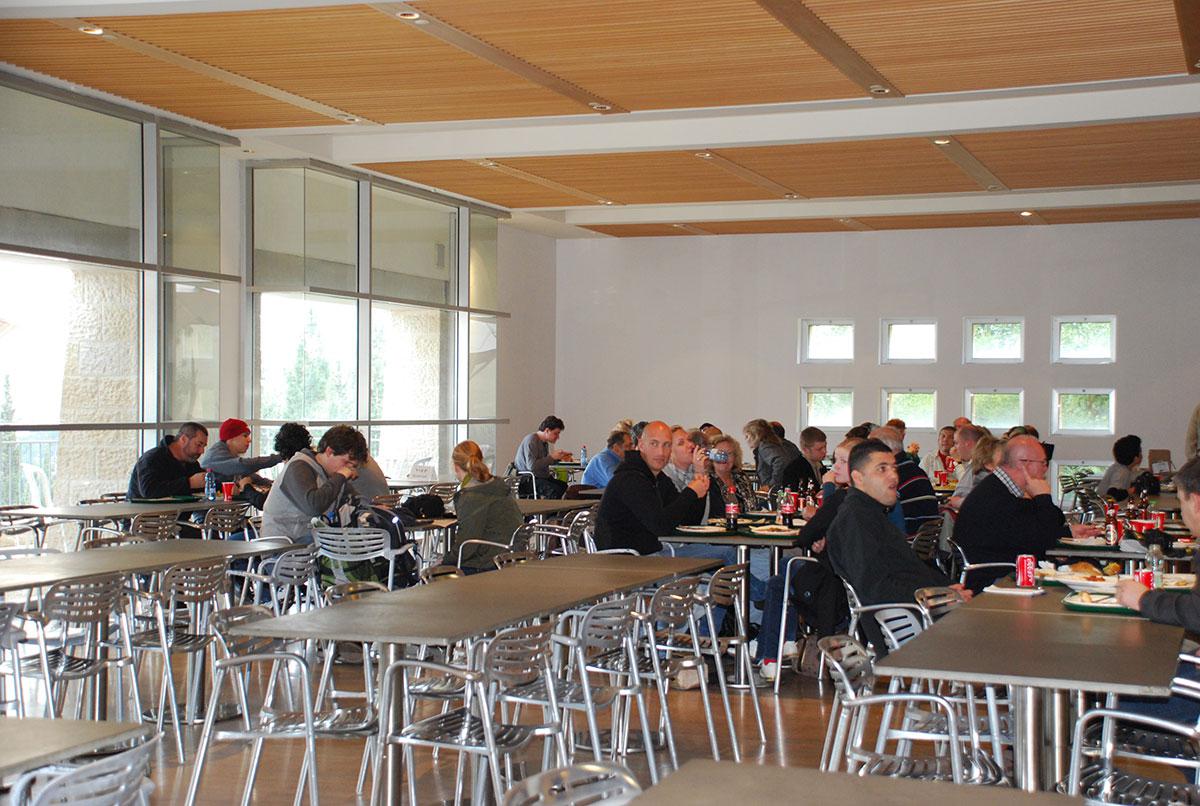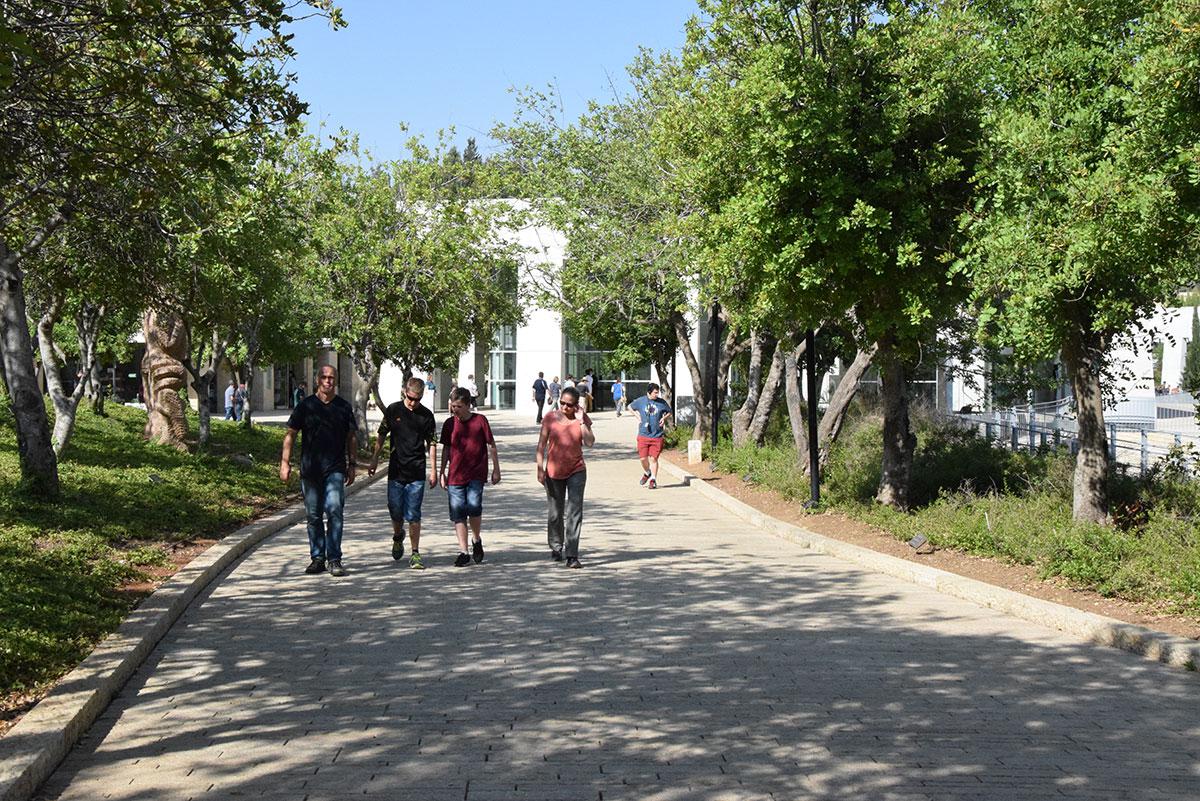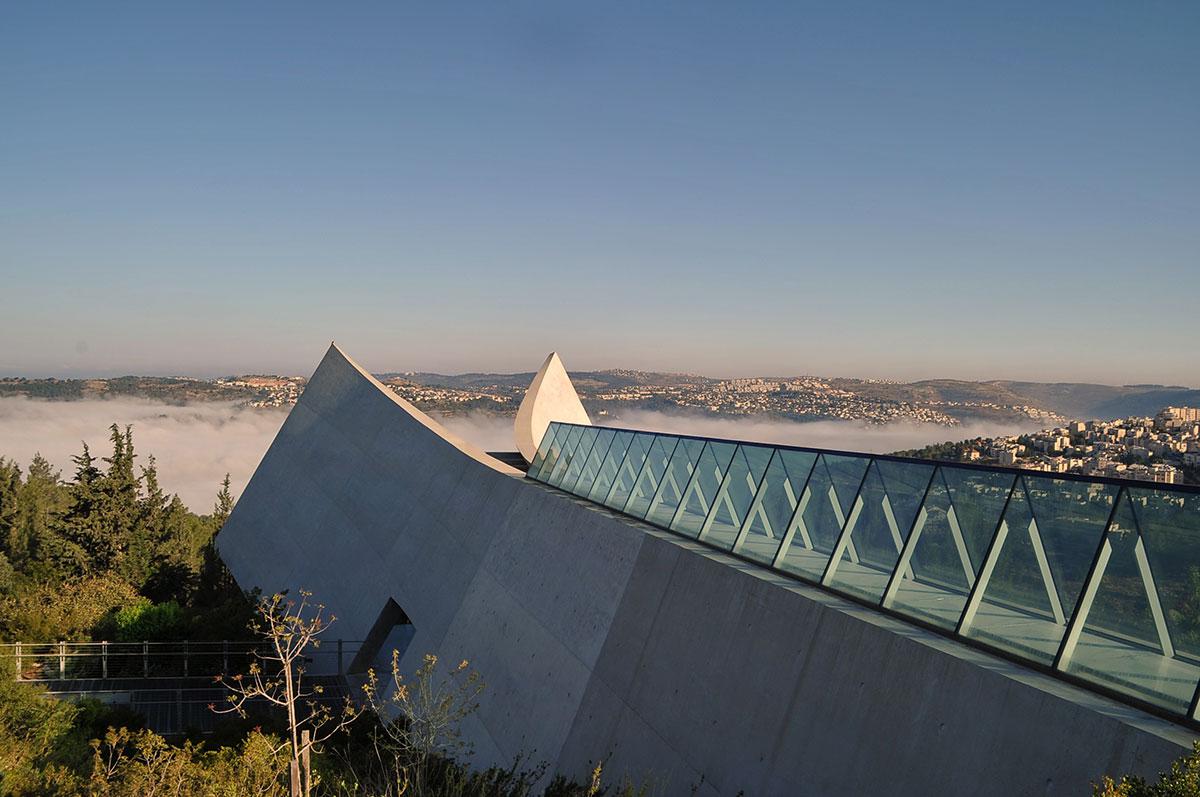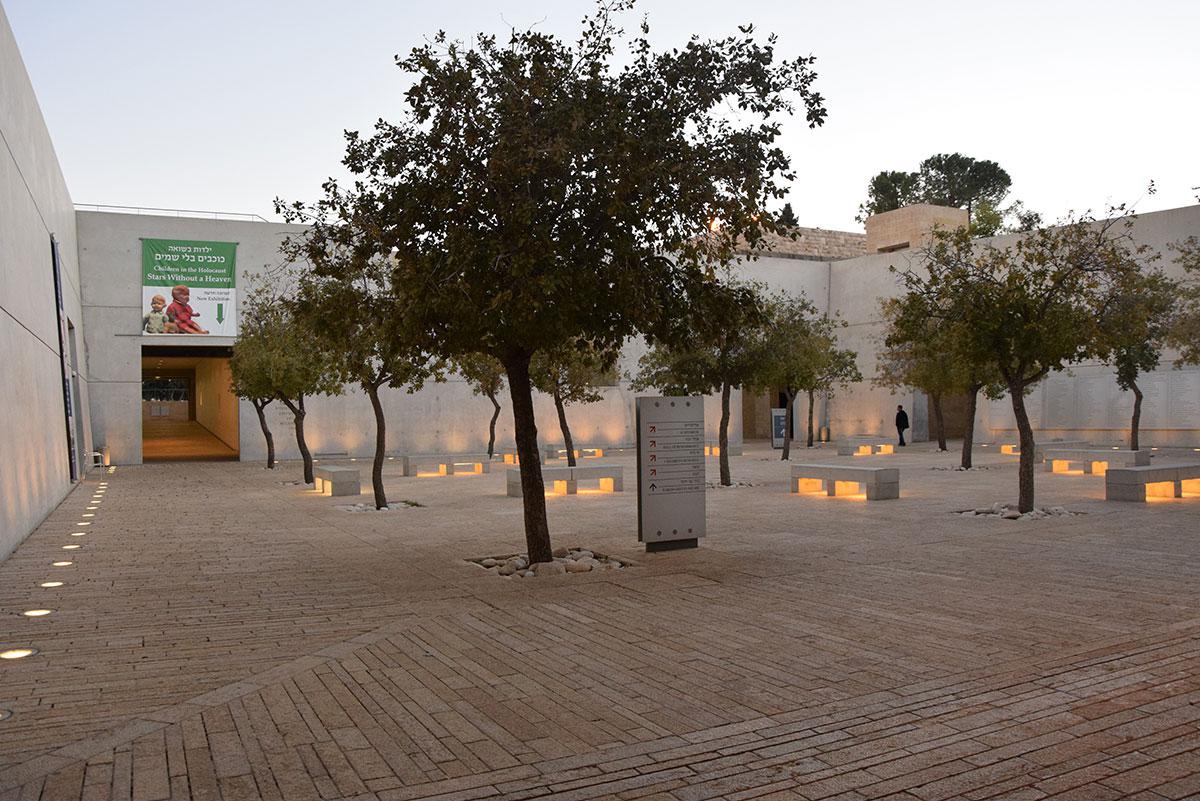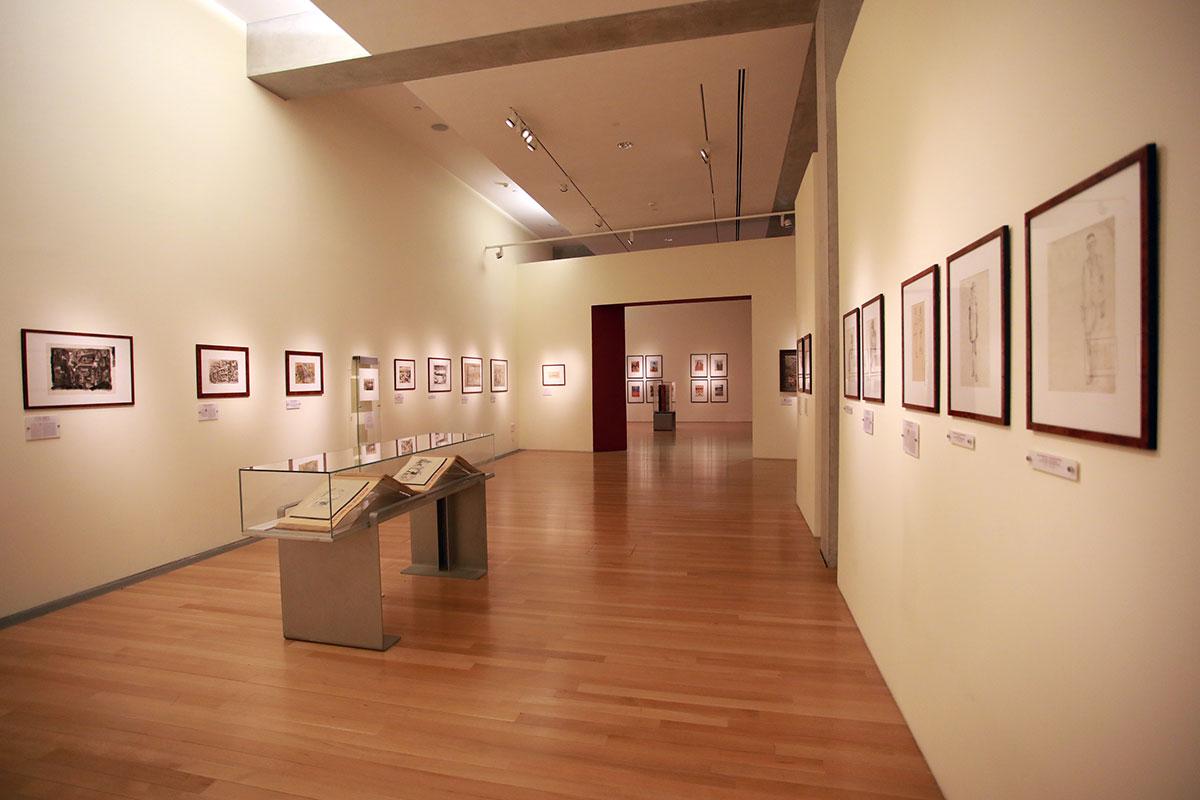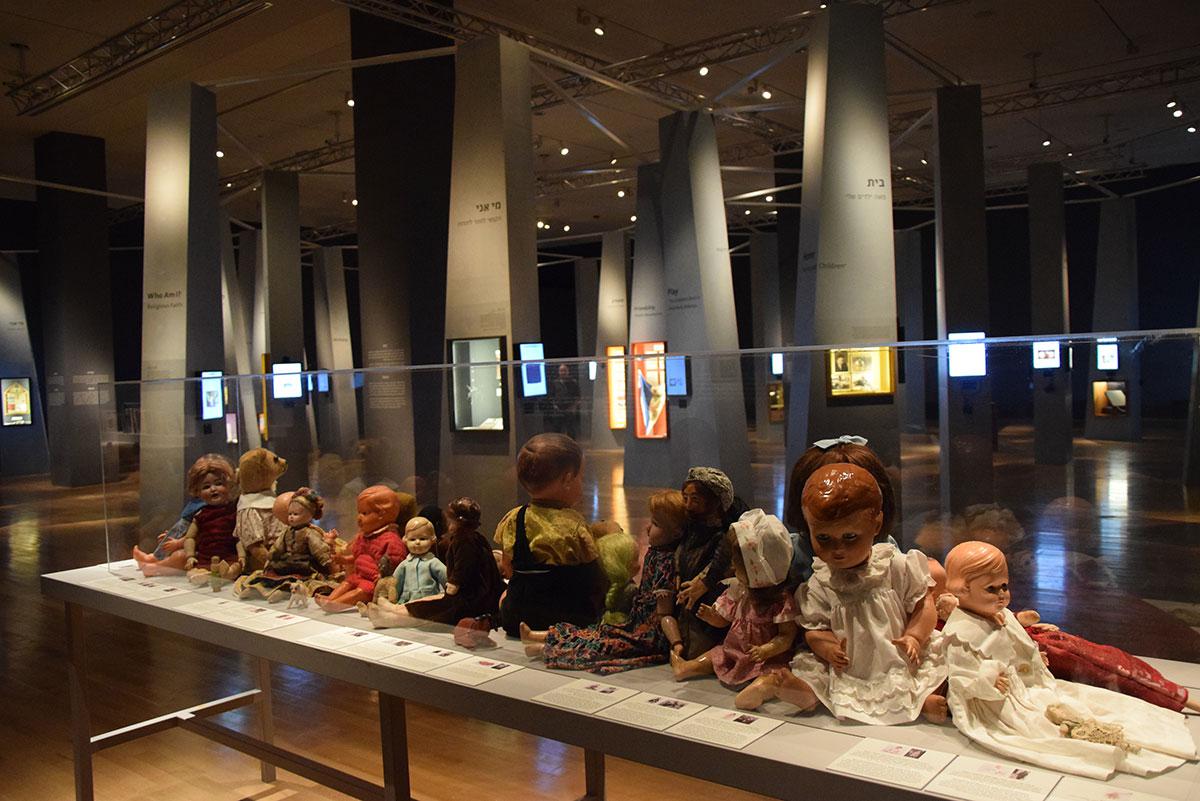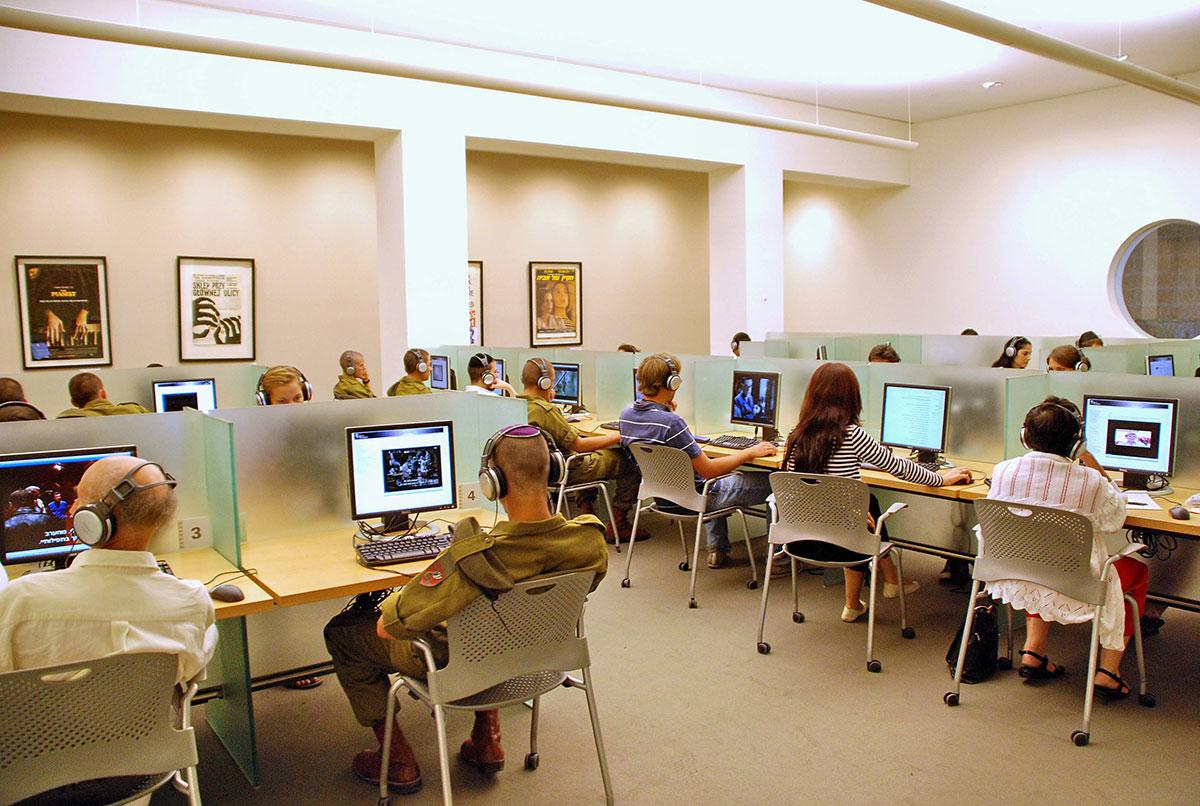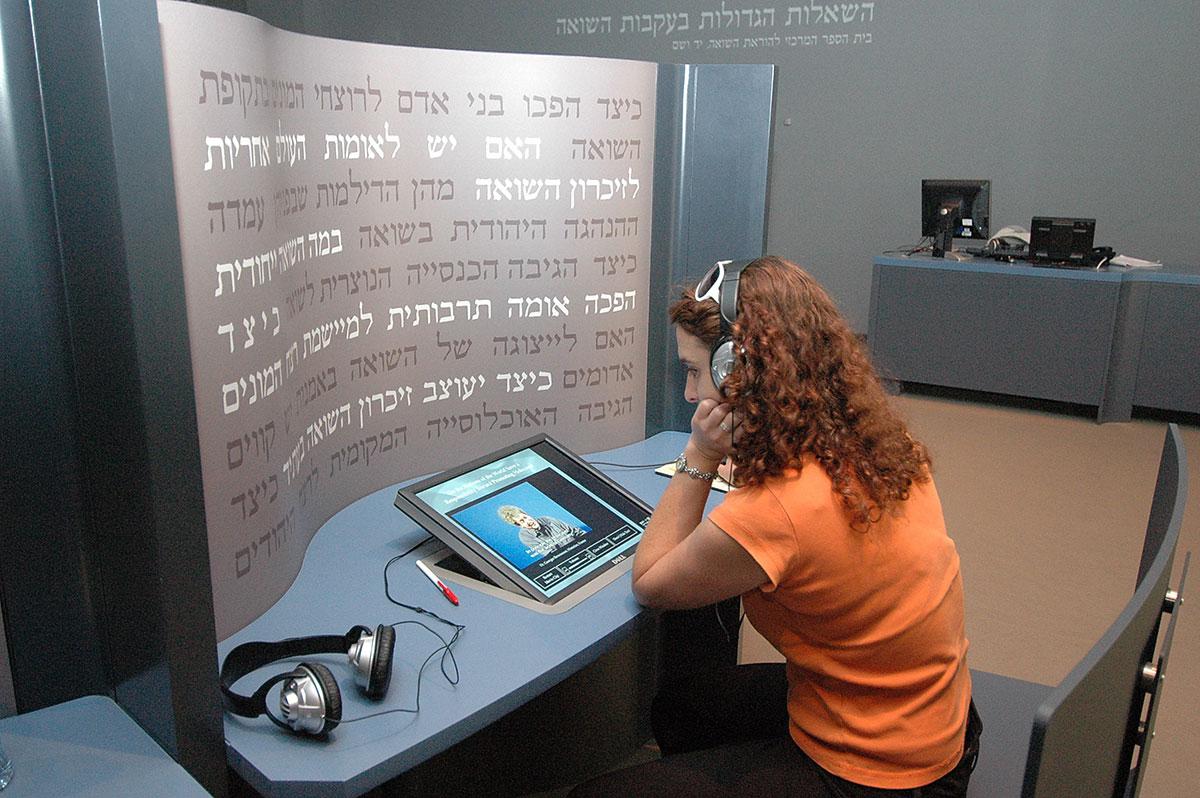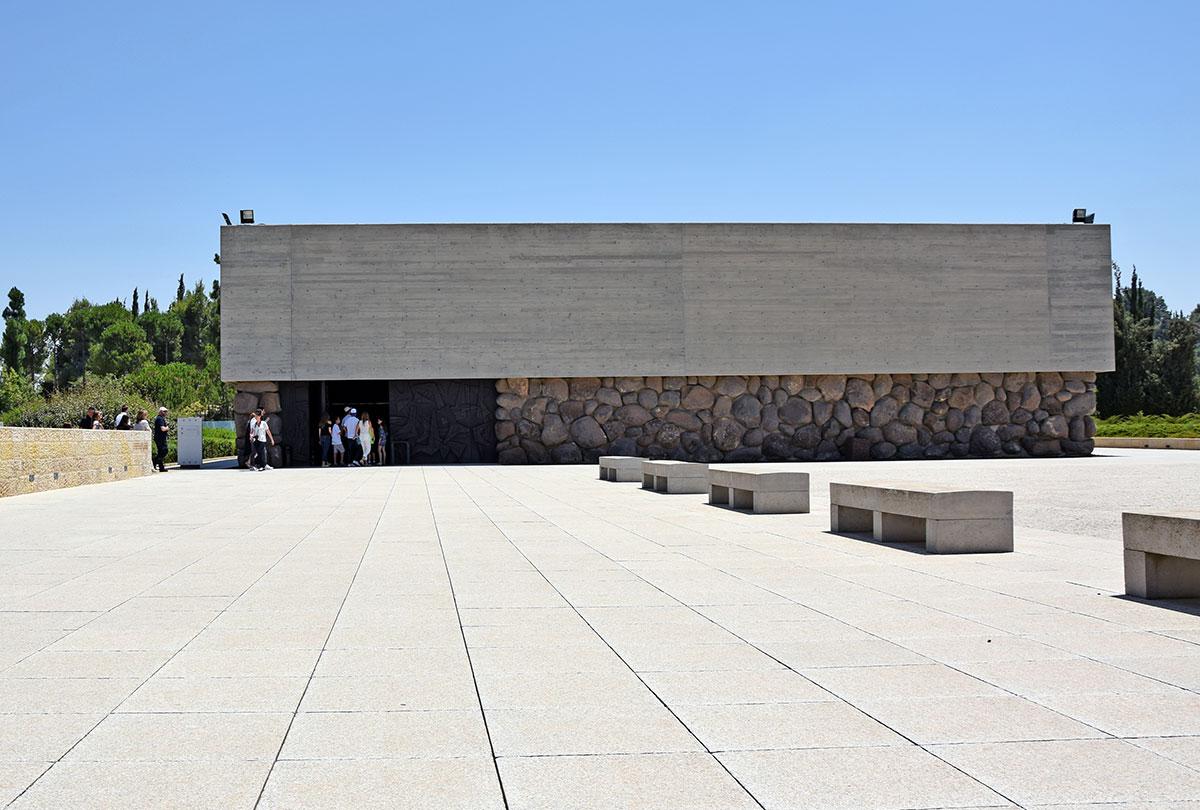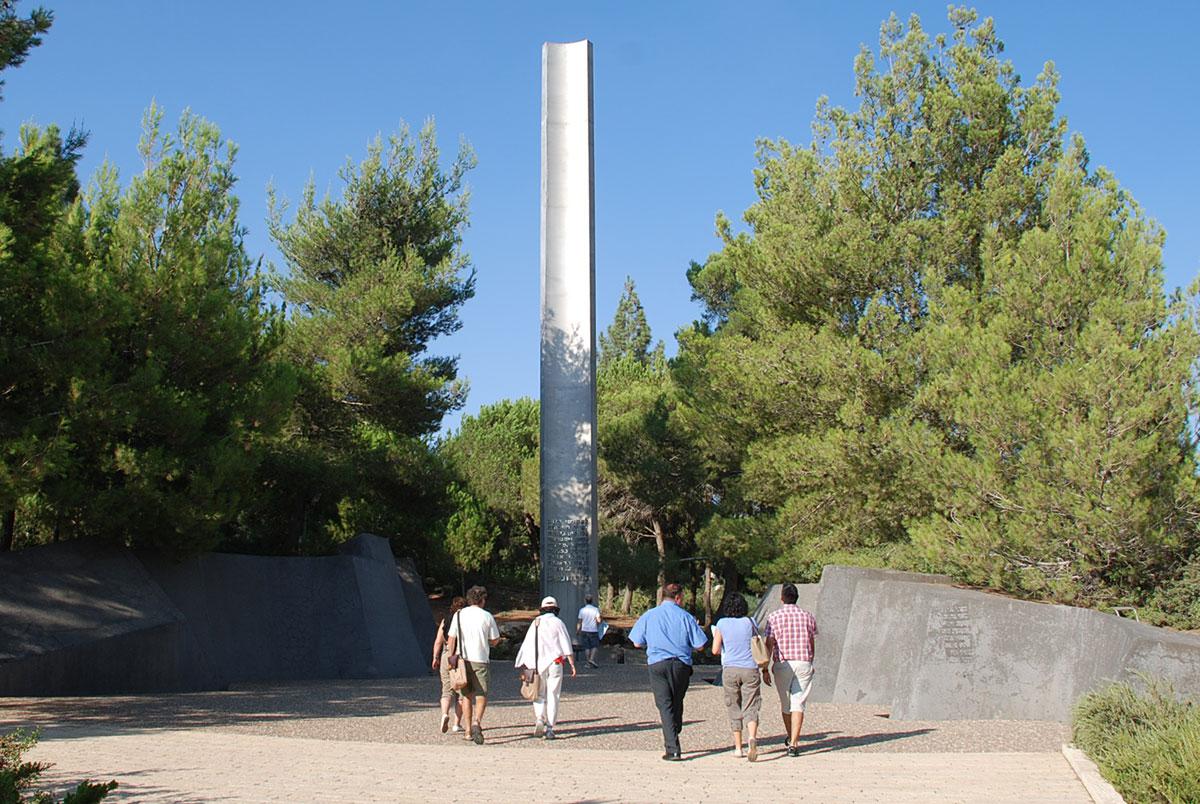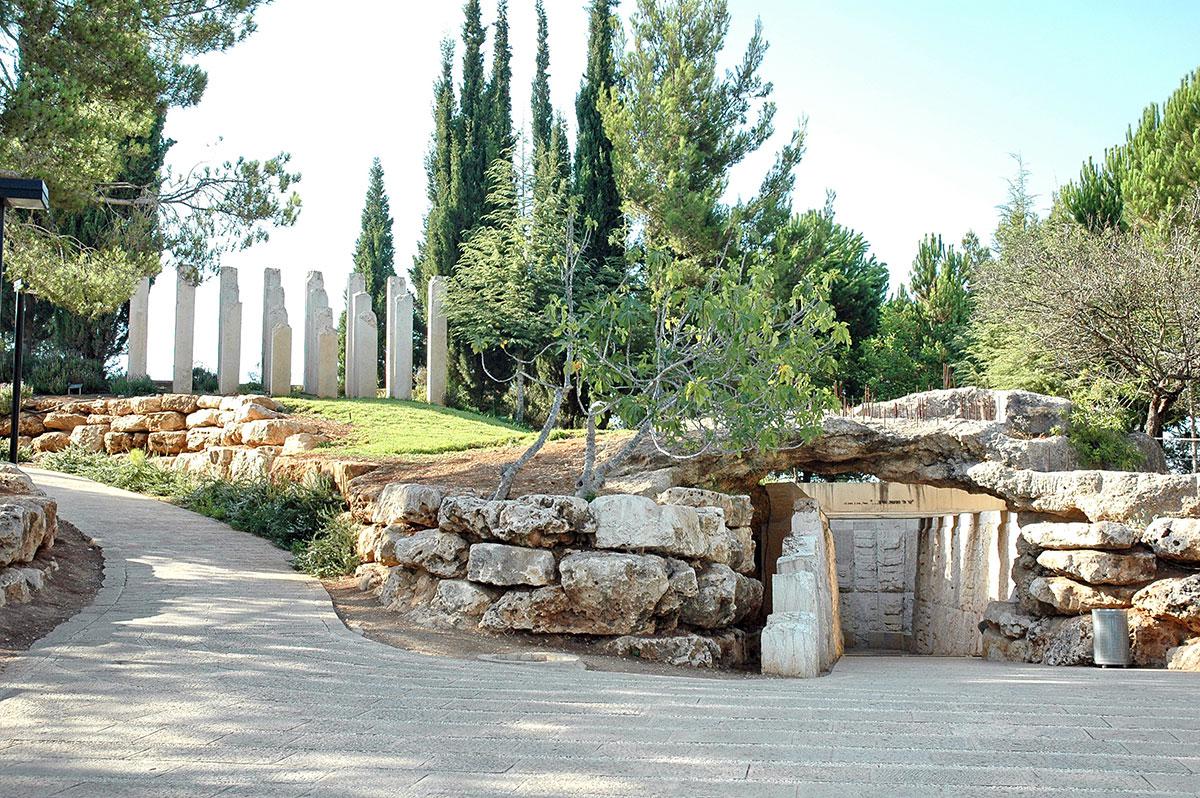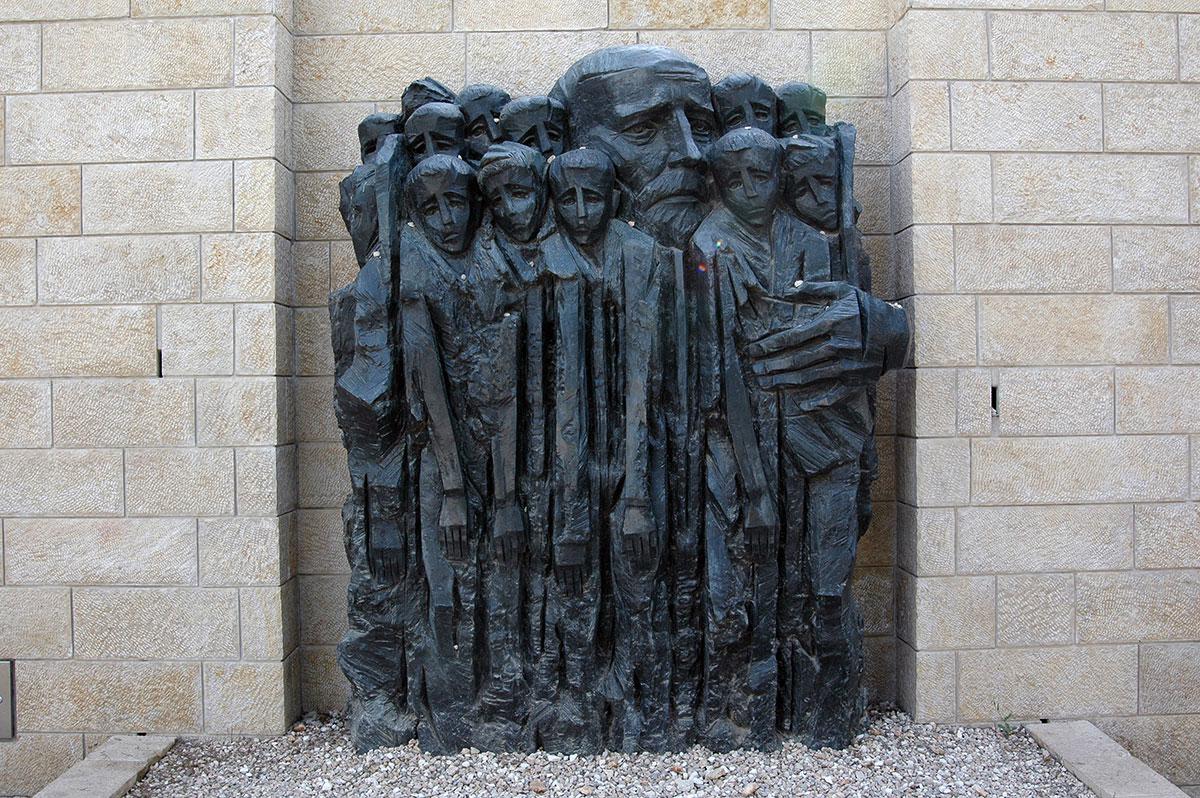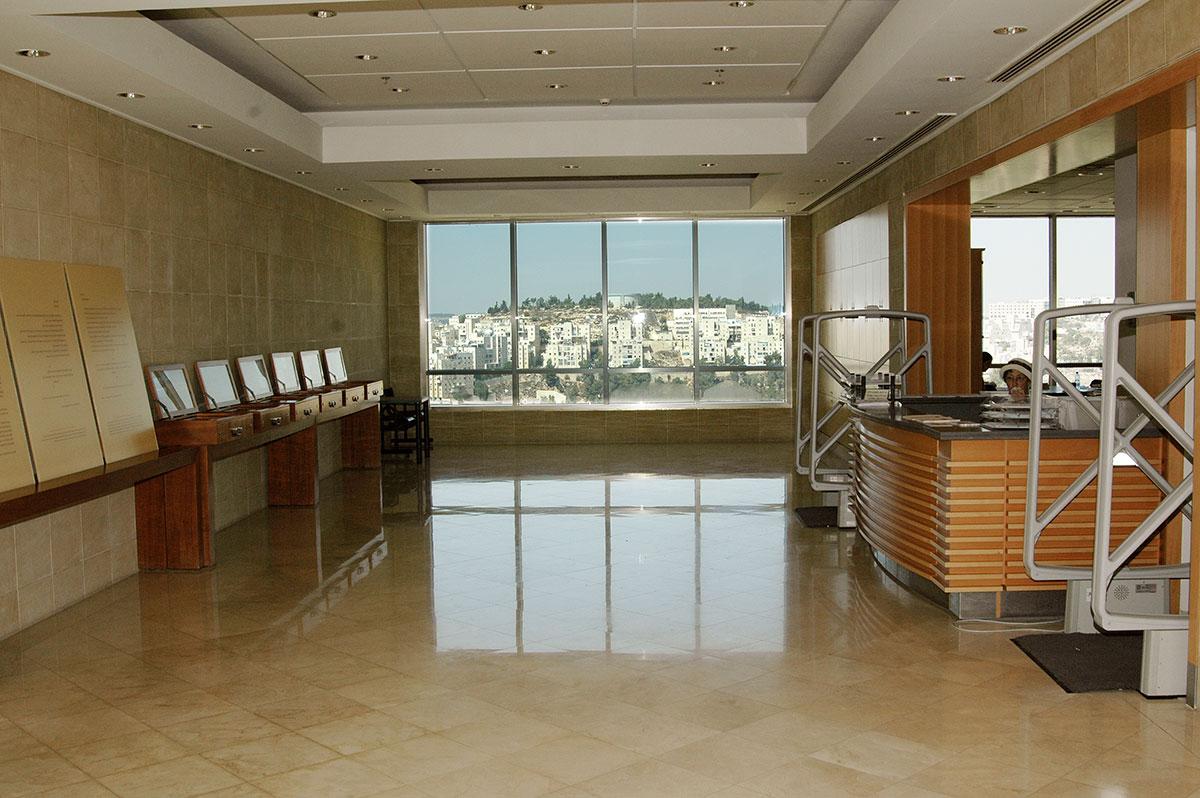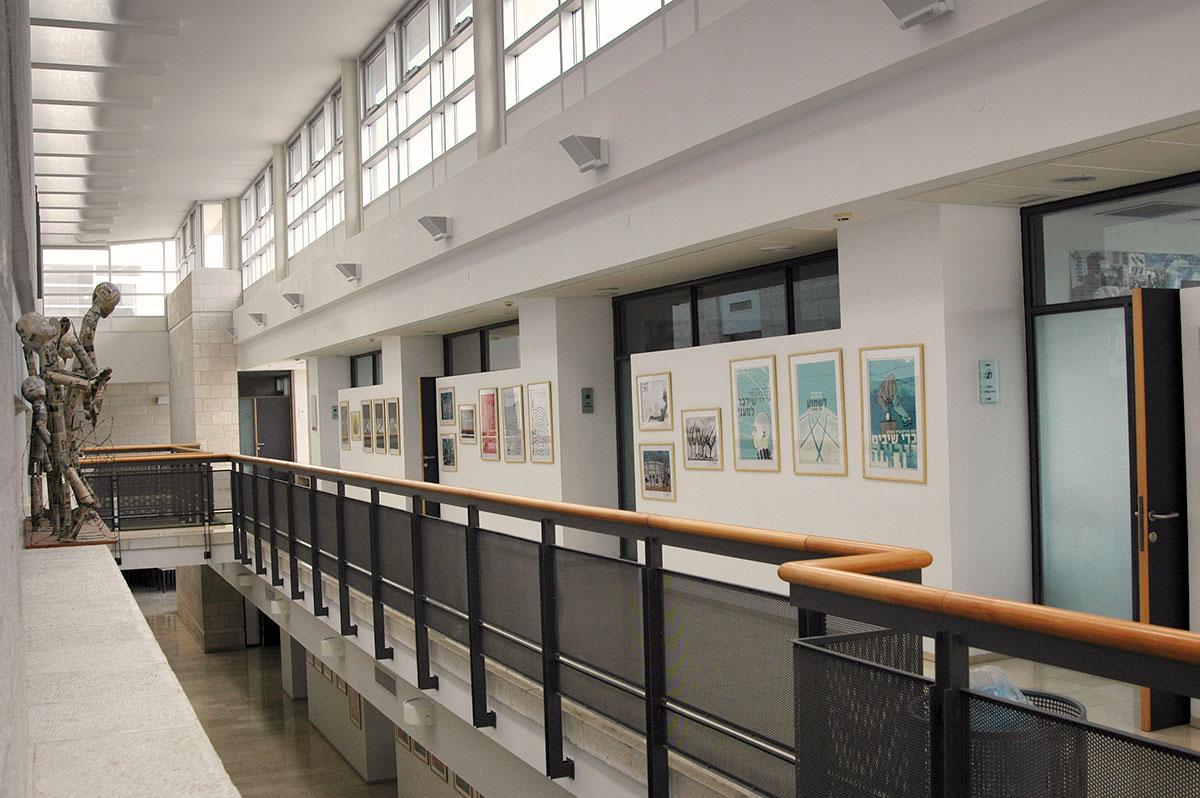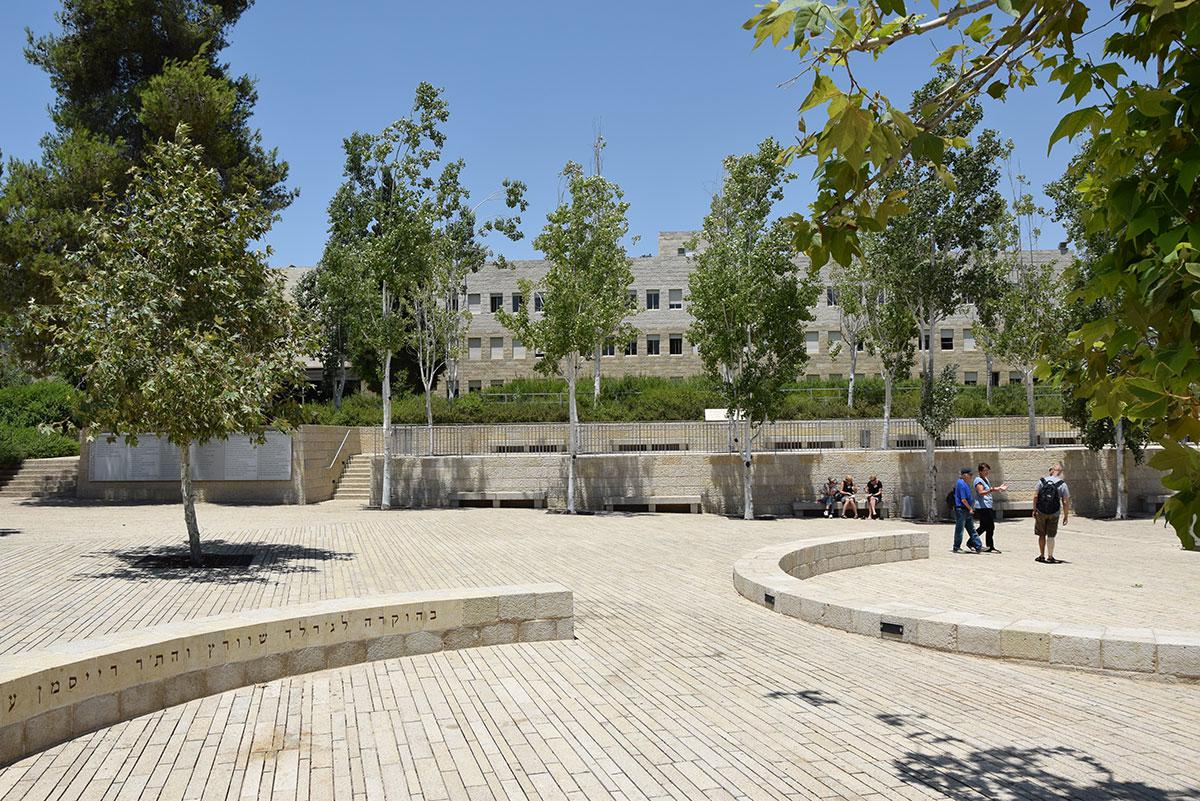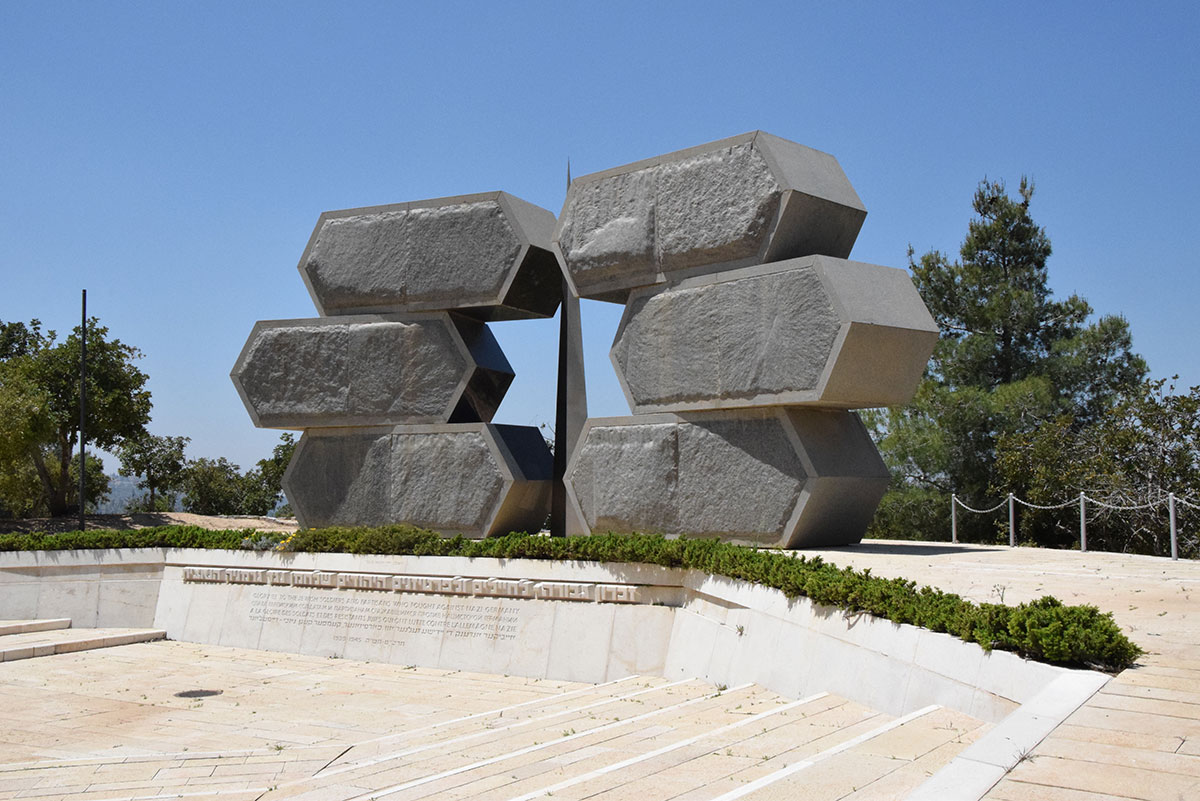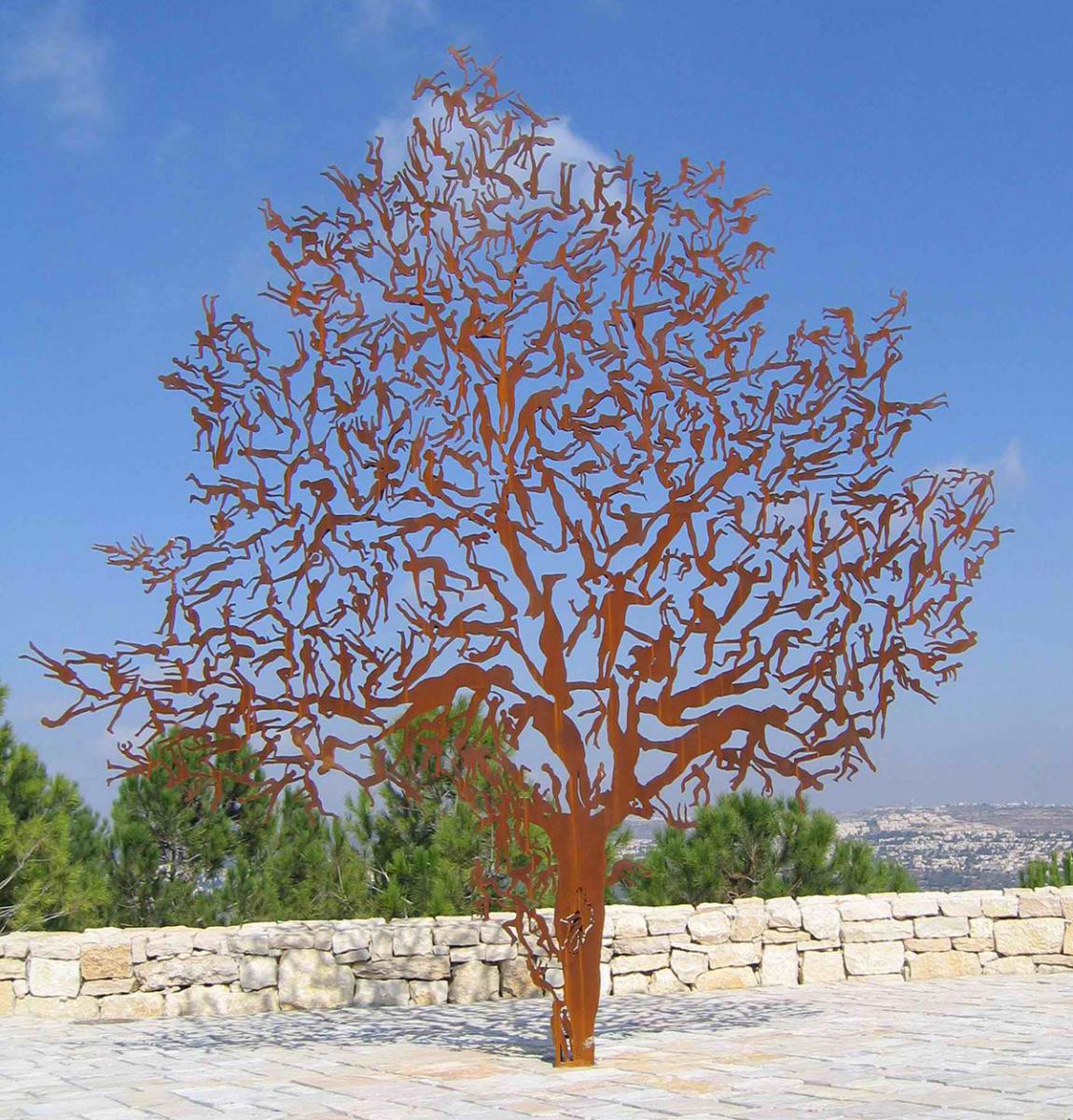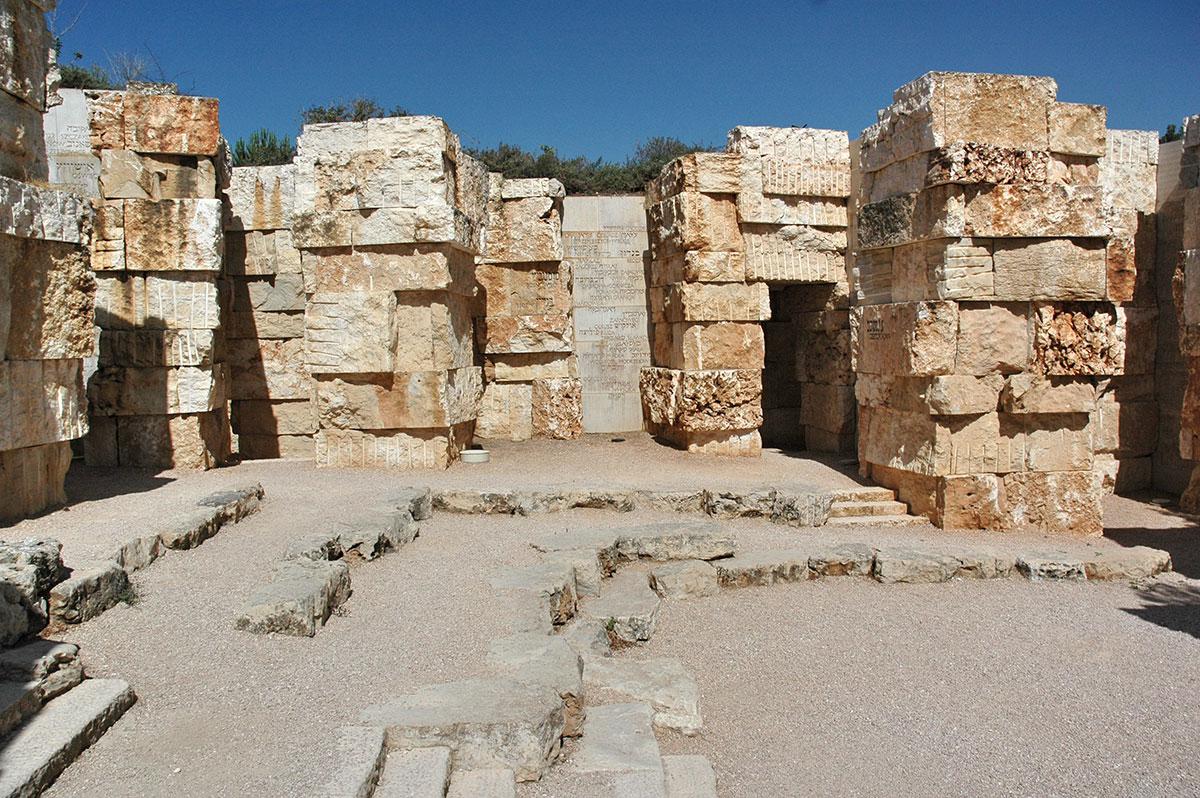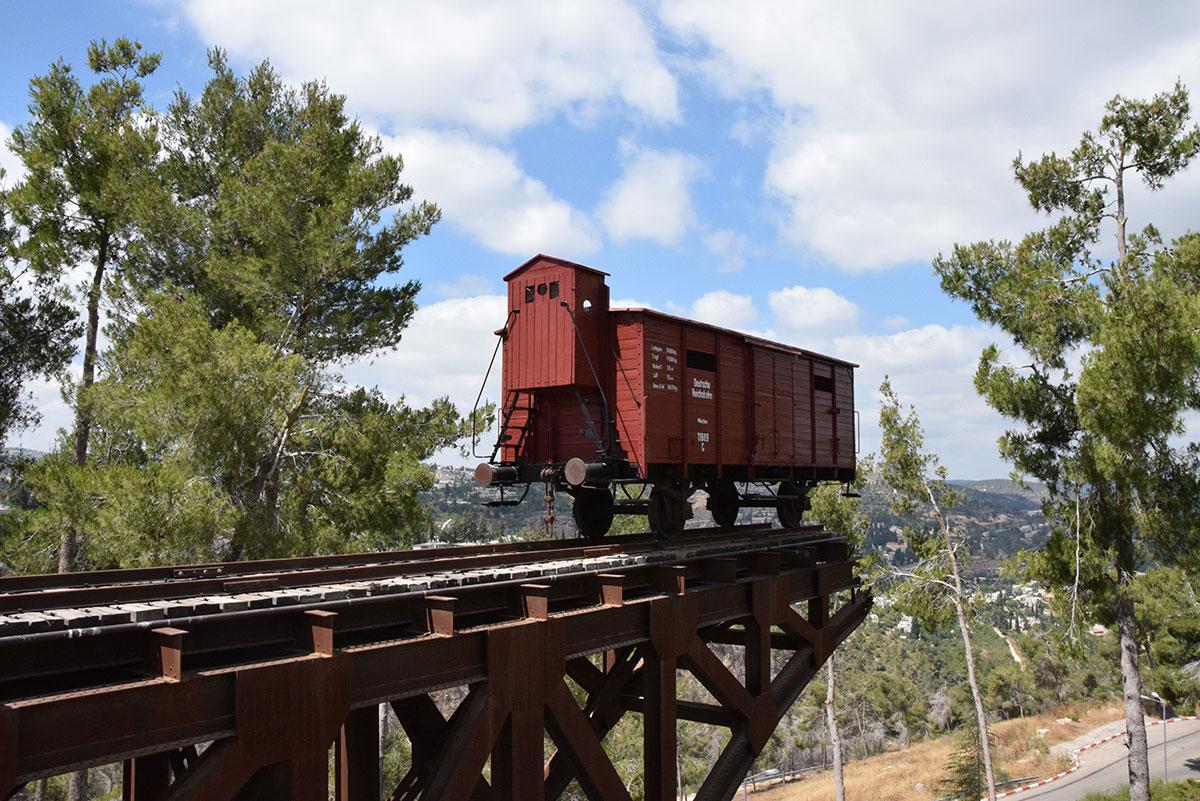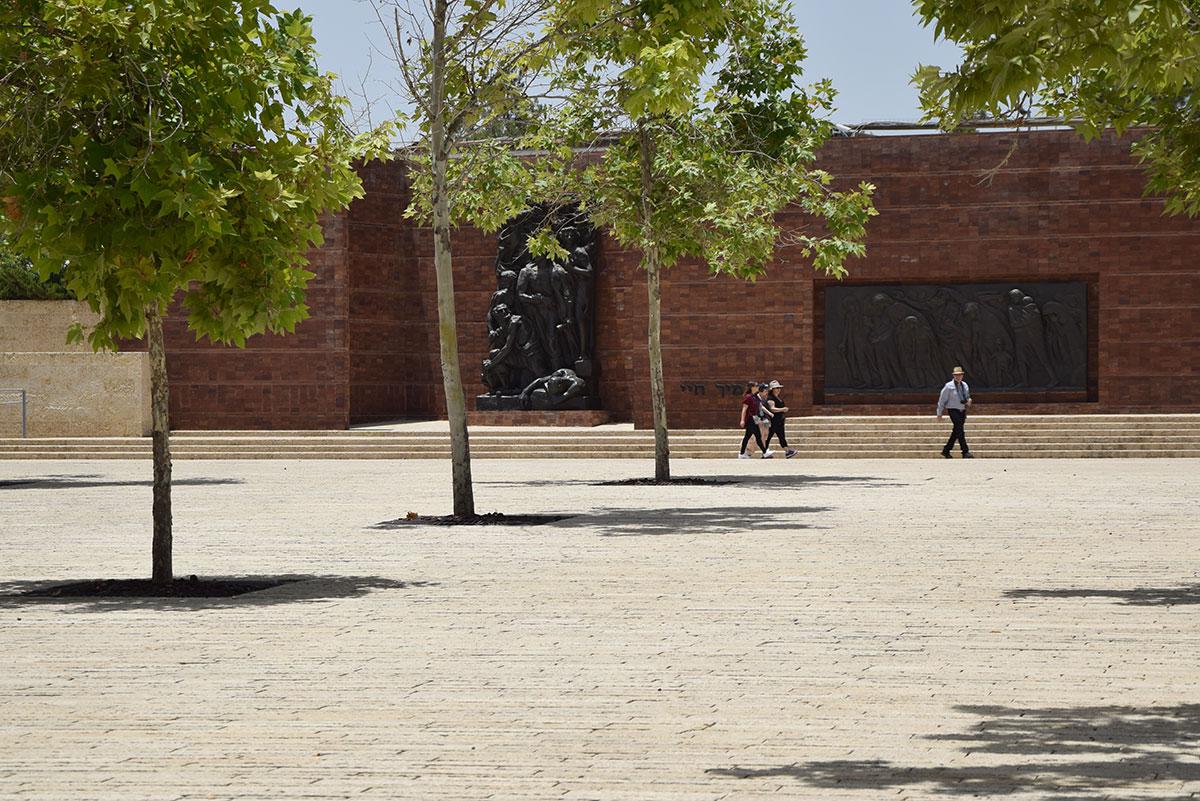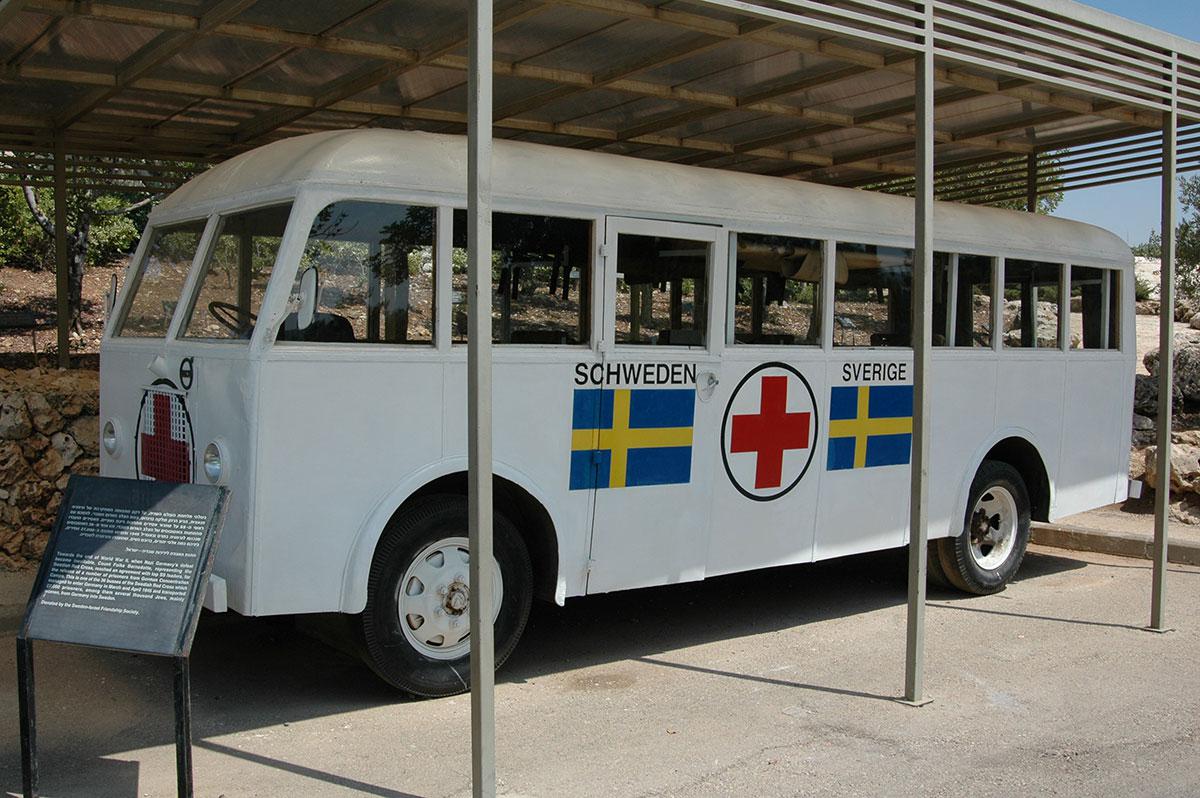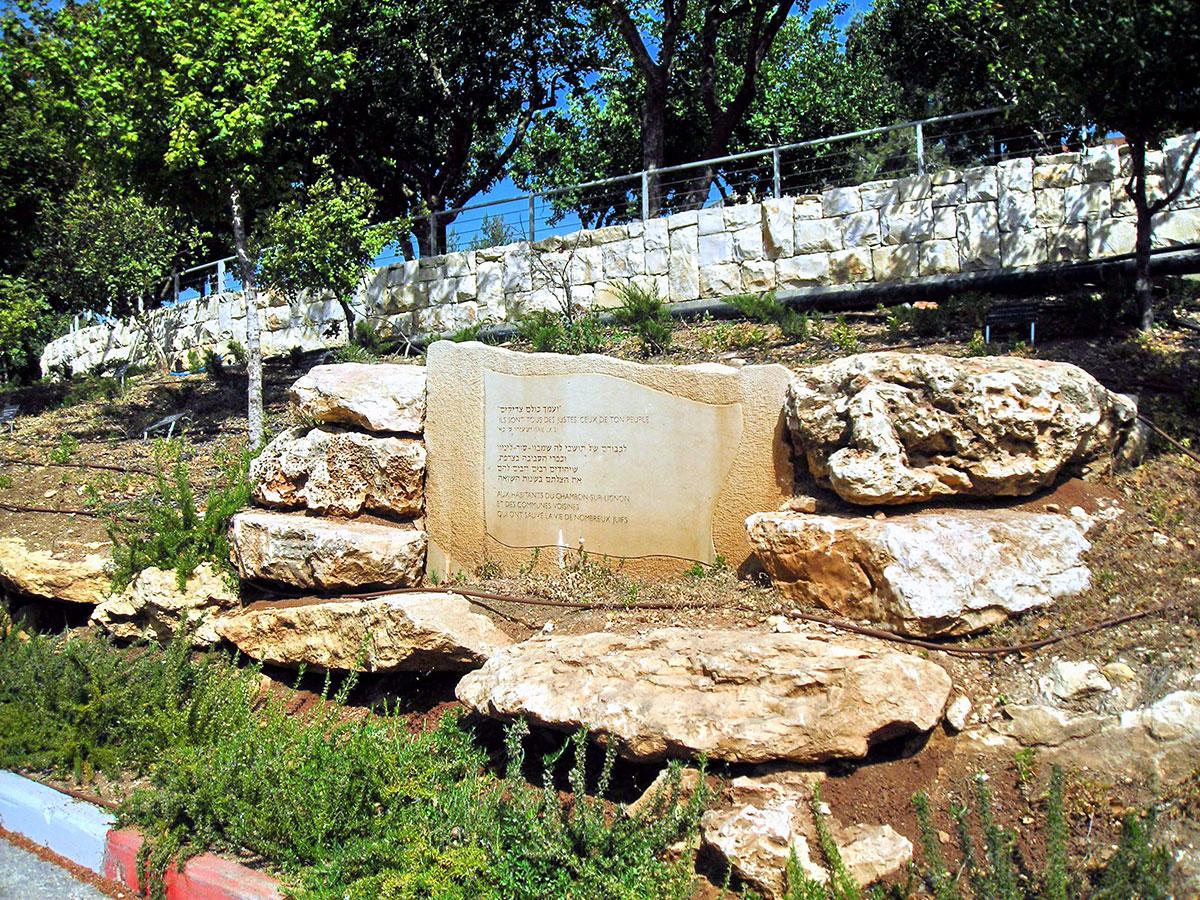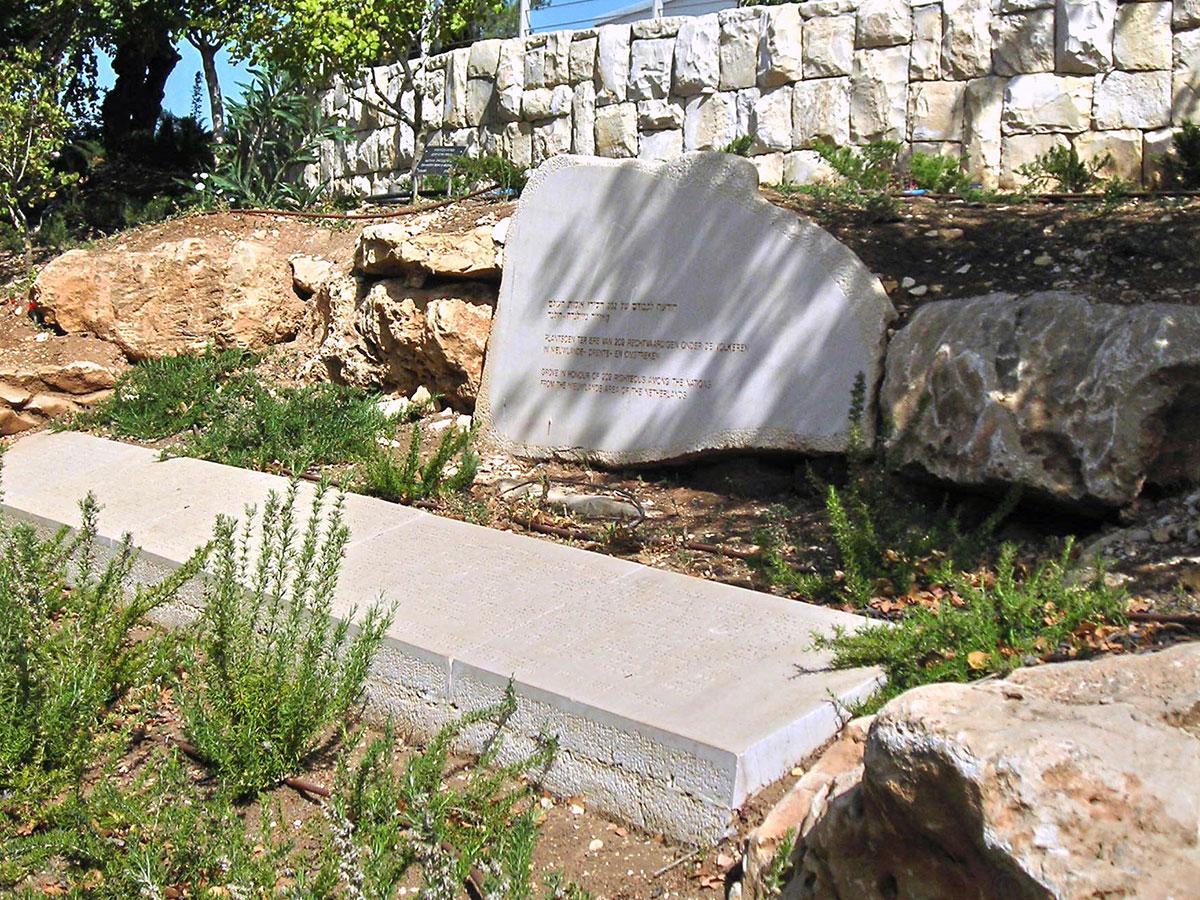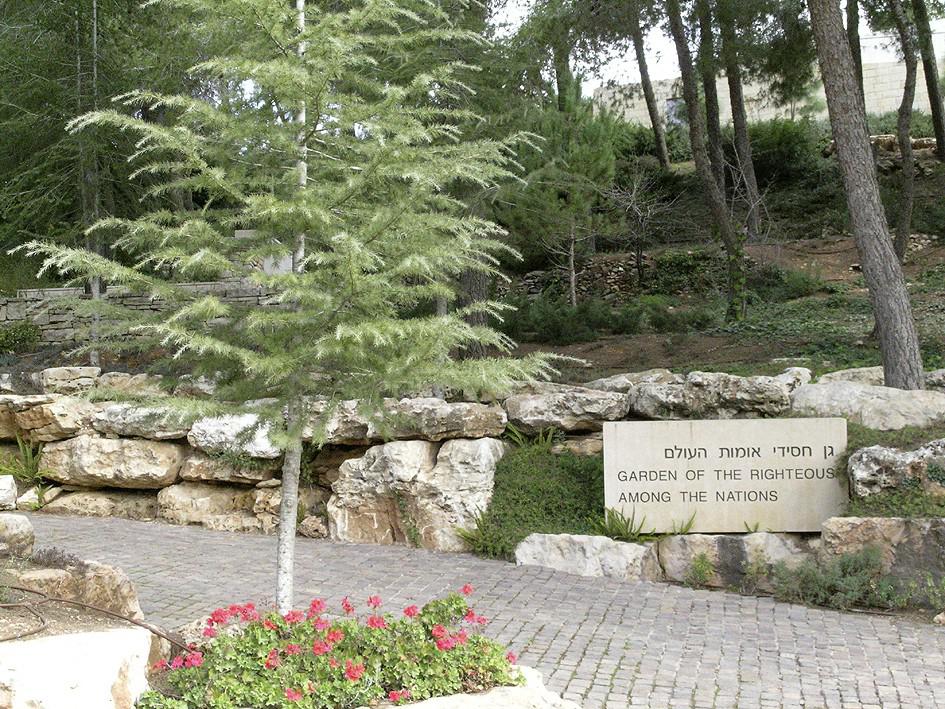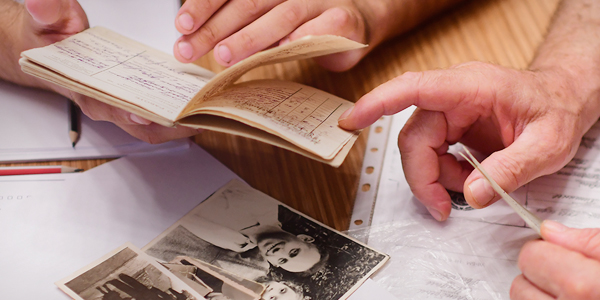Map of Yad Vashem
Architect - Moshe Safdie
Donor - David and Fela Shapell
The entrance level of the glass and concrete enclosed Visitors’ Center serves as a place of orientation, information, reception and gathering. It opens in all directions to views of the campus and the surrounding landscape. On the floor below, open to the view of the valley, are visitor services, a cafeteria, restrooms and checkrooms. Below this are the parking levels.
The Book and Resource Center is located in Yad Vashem’s new Entrance Complex and is managed by Steimatzky Group Ltd. The center provides a wide range of current reference books, multi-media, memoirs and Holocaust literature for visitor purchase. The 300 square meter building acts as a resource center and fills book orders and visitor requests related to the Holocaust and WWII in various languages. The center also offers all of Yad Vashem’s publications as well as educational materials produced by its International School for Holocaust Studies.
Trees have been planted around the Yad Vashem site in honor of those non-Jews who acted according to the most noble principles of humanity by risking their lives to save Jews during the Holocaust. Plaques adjacent to each tree record the names and countries of origin of those being honored.
The new Holocaust History Museum's nine underground galleries tell the story of the Shoah from the point of view of the Jews. The chronological and thematic narrative is punctuated by a look into the worlds of Jews who lived - and died - under the Nazis and their collaborators. The exhibits incorporate a wide variety of original artifacts, testimonies, photographs, documentation, art, multimedia, and video art.
The names and personal details of millions of victims have been recorded on Pages of Testimony, symbolic tombstones filled out by survivors in memory of their loved ones, and preserved in the Hall of Names. In an ongoing effort to collect more names before it is too late, Yad Vashem asks the public to assist in this sacred mission. To submit Pages of Testimony, visit The Central Database of Shoah Victims' Names.
The new Holocaust Art Museum exhibits the world's largest collection of art created in ghettos, camps, hideouts, and other places where artistic endeavor was nearly impossible. These works reflect the very spirit of the victims and survivors. The Holocaust Art Museum also contains the world's first computerized archive and information center regarding Shoah art and artists.
The Exhibitions Pavilion displays a wide variety of historical, thematic, and art exhibits. This opens unique windows to the outer and inner worlds of Shoah victims and contributes unique perspectives to the ongoing attempt to understand the meaning of the Shoah.
The Visual Center enables groups or individuals to view Shoah-related visual materials on large or personal screens. These include documentaries, feature films, and survivor testimonies taken by Yad Vashem and other organizations. Prominent among these is the Visual History Collection of the Survivors of the Shoah Visual History Foundation.
The Learning Center allows visitors to explore historical, thematic, and moral dilemmas and issues related to the Shoah. Through directed and independent learning, computer stations provide access to a wide range of information from internationally recognized historians, philosophers, and Yad Vashem's knowledge base. The Learning Center is open to organized groups, independent groups, and individuals.
An imposing, tent-like basalt structure that allows visitors to pay their respects to the memories of the martyred dead. On the floor are the names of 22 Nazi murder sites - extermination and concentration camps, transit camps and killing sites - chosen from the hundreds of murder sites that existed throughout Europe. A memorial flame burns continuously, next to a crypt containing ashes of victims brought from the extermination camps.
Architect: Aryeh Elhanani
Eternal Flame: Kosso Eloul
Southern gate: David Palombo Western gate: Bezalel Schatz
The Pillar of Heroism commemorates Jewish resistance during the Holocaust. The inscription on the concrete block reads: "Now and forever in memory of those who rebelled in the camps and ghettos, fought in the woods, in the underground and with the Allied forces; braved their way to Eretz Israel; and died sanctifying the name of God" .
Sculptor: Buki Schwartz
This unique memorial, hollowed out from an underground cavern, is a tribute to the approximately 1.5 million Jewish children who perished during the Holocaust. Walking through the memorial, the visitor will hear the names of murdered children, their ages and countries of origin in the background.
Architect: Moshe Safdie
A tribute to the great Polish-Jewish educator Dr. Henrik Goldschmidt, known by his pseudonym Janusz Korczak, who ran an orphanage in the Warsaw Ghetto. Despite his efforts to save his wards, Korczak and approximately 200 children from his orphanage were sent to the Treblinka death camp on August 5, 1942.
Sculptor: Boris Saktsier
The largest and most comprehensive repository of documentary material on the Holocaust in the world, the Archive contains approximately 62 million pages and more than 267,500 still photographs, as well as thousands of audio and videotaped testimonies of survivors. These may be accessed by the public and viewed in the appropriate rooms. Yad Vashem's library has the world's most comprehensive collection of books on the Holocaust. It houses more than 90,000 titles in many languages and thousands of periodicals.
Architect: Danny Lanski
The Family Plaza, located between the International School for Holocaust Studies and the Archives and Library Building, was built to commemorate the Jewish family in the Holocaust. On permanent display within the Plaza is a sculpture, strategically placed to overlook the impressive view of Jerusalem and its suburbs, by renowned artist, Menashe Kadishman.
Committed to promoting Holocaust education and transmitting the legacy of the Holocaust to the younger generations, the School offers educational activities to pupils, students and soldiers, holds training seminars for teachers in Israel and overseas, arranges symposia, and offers on-line teaching courses. The team of experts at the school has developed a variety of educational programs and study aids on the Holocaust. For more information please call 02-6443654.
Architects: David Guggenheim, Daniel Minz
The International Institute for Holocaust Research plans and carries out research projects, organizes international seminars and conferences, and coordinates joint projects with research institutes around the world. The Institute also supports young research scholars, and publishes research theses and conference proceedings.
Approximately 1,500,000 Jews fought against the Nazis, as Allied soldiers, as partisans, in the resistance movements, and in the ghettos. This monument is dedicated to the hundreds of thousands who lost their lives in this struggle.
Sculptor: Bernard Fink
The Partisans' Panorama pays tribute to the Jewish fighters who joined the partisans during the Holocaust. The sculpture at its center is entitled "For is the tree of the field man" (Deut. 20:19). The sculptor, Zadok Ben-David, chose the tree as a symbol of the partisan fighter, whose life depended on the forest and its trees as a place to hide. On a nearby stone the words of the partisans' anthem are engraved in Hebrew, Yiddish and English.
Architect: Dan Zur
The Valley is a massive 2.5 acre monument literally dug out of the natural bedrock. The names of over 5,000 Jewish communities that were destroyed or barely survived in the Holocaust are engraved on its 107 walls. In the center of the monument stands Beit Hakehillot, which houses a gallery for temporary exhibitions. Visitors can also see a short film there, depicting the world that was.
Architects: Dan Zur and Lipa Yahalom
The Memorial to the Deportees was established at Yad Vashem as a monument to the millions of Jews herded onto cattle-cars and transported from all over Europe to the extermination camps. An original German cattle-car given to Yad Vashem by the Polish authorities stands at the center of the memorial site. On the adjacent wall, the testimony of survivor Avraham Krzepicki is inscribed.
Architect: Moshe Safdie
Nathan Rapoport (1911-1987)
The Ghetto Uprising, 1975
The Last March, 1976
Cast bronze
Collection of the Yad Vashem Art Museum, Jerusalem
Gift of Leon and Ann Jolson, New York
Lying at the heart of the Mount of Remembrance, "Warsaw Ghetto Square" has become a key site in Holocaust commemoration at Yad Vashem. The large Square is the location of the State of Israel’s official opening ceremony of Holocaust Remembrance Day each year, dominated by the red brick Wall of Remembrance bearing bronze reliefs sculpted by Nathan Rapoport. Rapoport's work is a tribute to the bravery and spirit of the Jewish ghetto fighters who audaciously and against all odds stood up to the Nazis an unprecedented uprising.
The Yad Vashem monument echoes Rapoport's double-sided Ghetto Heroes monument erected in 1948 in Warsaw in the place where the Jewish uprising started. It comprises two central elements: the first, a low relief titled: "The Last Journey," depicting Jews led to their murder; the second, the dynamic "Warsaw Ghetto Uprising" sculpture, representing the heroism of the fighters. The biblical quote "In thy blood, live" (Ezekiel 16:6) connects the two main components of this site, thus conveying a message of the Jewish people's continuity.
Towards the end of Word War II when Nazi Germany's defeat became inevitable, Count Folke Bernadotte, representing the Swedish Red Cross, reached an agreement with top SS leaders, for the release of a number of prisoners from German Concentration Camps. This is one of 36 busses of the Swedish Red Cross which managed to enter Germany on March and April 1945 and transported 25,000 prisoners, among them several thousand Jews, mainly women, from Germany to Sweden.
The ambulance was donated by the Swedish Israeli Friendship Society.
Le Chambon-sur-Lignon is a Protestant village in Haute-Loire in southern France. During World War II, it became a haven for Jews fleeing from the Nazis and their French collaborators.
The Chambonais hid Jews in their homes, sometimes for as long as four years, provided them with forged I.D. and ration cards, and helped them over the border to safety in Switzerland. With their history of persecution as a religious minority in Catholic France, empathy for Jews as the people of the Old Testament, and the powerful leadership and example of their pastor and his wife, Andre and Magda Trocme, the people of Chambon acted on their conviction that it was their duty to help their "neighbors" in need.
The Chambonais rejected any labeling of their behavior as heroic. They said: "Things had to be done and we happened to be there to do them. It was the most natural thing in the world to help these people." After the round- up and deportation of Jews in Paris in July 1942, Pastor Trocme had delivered a sermon to his parishioners, "The Christian Church should drop to its knees and beg pardon of God for its present incapacity and cowardice."
The American Friends (Quakers) and other Protestant organizations provided assistance to Chambon to set up homes for children whose parents had been deported. The head of one of these homes was Daniel Trocme, the young cousin of Pastor Trocme. In June 1943 he and "his" children were arrested and deported to the East. Daniel Trocme died in Majdanek.
The Trocmes have been recognized by Yad Vashem as Righteous among the Nations; a tree was planted in honor of Andre and Magda Trocme and another in honor of Daniel Trocme. As seen in the picture, a small garden and plaque on the grounds of Yad Vashem were dedicated to the people of Chambon.
A unique instance of collective rescue activity took place in the Dutch village of Nieuwlande. In 1942 and 1943 the village inhabitants resolved that every household would hide one Jewish family or at least one Jew. Given the collective nature of the activity, the danger to the village was small, there was no fear of denunciation since all the village dwellers were partners to the "crime". All 117 inhabitants of that village were recognized as "Righteous Among the Nations".
Arnold Douwes, the son of a pastor, was recruited for the underground by Johannes Post, a farmer and town counselor in the village of Nieuwlande. Post had never had very much to do with Jews or Judaism, but when antisemitic measures were introduced, he threw himself body and soul into the effort to help Jews on the run.
Already before Post's death Douwes had taken over. Jews ordered to report to Westerbork were sent to him by the undergound. He in turn, scoured the countryside to find families to shelter them. In addition, Douwes provided the fugitives with food, new identification papers, and financial support.
On June 18, 1988 a monument to honor the village of Nieuwlande was built in Yad Vashem, on the way down to the Valley of the Communities.
Since its inception, Yad Vashem has been charged with the sacred mission of preserving the memory of each of the six million victims of the Holocaust. For the family and friends of the murdered millions without a known gravesite of their own, the yearning for a spiritual resting place and a physical place of remembrance for their loved ones continues. For them, a plaque in Yad Vashem's Memorial Cave bears the closest resemblance to a physical gravestone.
Over 1,000 memorial plaques have been dedicated to individual survivors and victims, to entire communities, families and groups. For those wishing to endow a plaque in honour of a Victim or Survivor, please email international.relations@yadvashem.org.il




